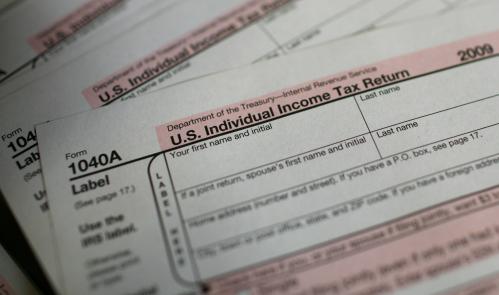Virtually everyone outside the Trump administration agrees that the GOP tax plans passed by the House and the Senate will aggravate income inequality. In fact, the party-line votes on both plans are the latest instance of a remarkable fact: Over the last 40 years, income inequality has accelerated when Republicans held the White House, the Congress or both, and slowed when Democrats were in charge.
No one is claiming that the GOP created America’s dramatic increase in income inequality. In a recent study issued by the Center for Business and Public Policy at Georgetown University’s McDonough School of Business, our analysis showed that changes in the U.S. and global economies and technology did most of that.
Between 1977 and 2014, the average pre-tax income of the bottom 50 percent of Americans—everyone below median income – increased just 1.7 percent, inching up from $15,948 to $16,216 (2014 dollars). Over the same years, the average pre-tax income of the top one percent soared 207 percent, jumping from $424,631 to $1,305,301.
During these years, Washington stepped in with new spending and tax credits that modestly helped the bottom half of Americans: Their average post-tax income rose 22 percent, from $20,390 in 1977 to $24,047 in 2014. But tax and spending changes had little effect on the top one percent, whose average post-tax incomes still rose 196 percent, from $342,328 to $1,012,429.
Partisan politics also played a major role: The actual income paths of both groups from 1977 to 2014 depended on whether Republicans or Democrats controlled the White House and/or Congress. For example, when Republicans held the presidency, the top one percent’s rising share of all post-tax income accelerated on average by 0.4 percentage-points, while under Democratic presidents their rise correspondingly slowed by 0.4 percentage points. Similarly, the bottom 50 percent’s falling share of post-tax income accelerated under GOP presidents by an average of 0.5 percentage-points—and again, their decline decelerated by that much under Democratic presidents.
The story is the same with Congress. During years of GOP control, the decline of the bottom half’s share of national income accelerated, on average, by more than 0.5 percentage-points—and then slowed by about that much when Democrats were in charge of Congress. Party control of the legislative branch had the least effect on the income path of the top one percent: Their rising share of post-tax income accelerated by an average of 0.3 percentage-points during GOP Congresses, and decelerated by that much during years of Democratic control.
Finally, the results when either party controlled both the White House and Congress were the sum of the results for each branch.
This isn’t conventional wisdom dressed up as science; it is a scientific demonstration of how much elections matter. To test the limits, we also conducted a thought experiment: What would the incomes of the bottom half and the top one percent look like, if one or the other party had controlled both branches of government for the entire 37 years? We assume here that the economy’s course was unaffected by our hypothetical one-party government, and that each party maintains the distributional tendencies in tax and spending policy uncovered in our analysis.
With these assumptions, we calculate that if Democrats had been in charge the entire time, the post-tax income of the bottom 50 percent, on average, would have been an estimated $526 higher per-year or a total of $19,539 more for the whole period. Moreover, the top one percent would have taken home $14,226 less per-year, on average, or $526,373 less for the whole period.
Operating on the same assumptions, we calculate that Republican control of both branches for the entire period would have increased the post-tax income of the top one percent by $28,029 per year, on average, or $1,037,086 for the whole period. The incomes of the bottom 50 percent of Americans, on average, would have been $563 less per year, or $20,848 less for the entire period.
Helping the rich and letting those in the bottom half fend for themselves, it seems, is now part of the modern GOP’s DNA—and moderate resistance to that course seems to be embedded in the Democrats’ genes.
The Brookings Institution is committed to quality, independence, and impact.
We are supported by a diverse array of funders. In line with our values and policies, each Brookings publication represents the sole views of its author(s).










Commentary
Does science prove that the modern GOP favors the rich?
December 6, 2017